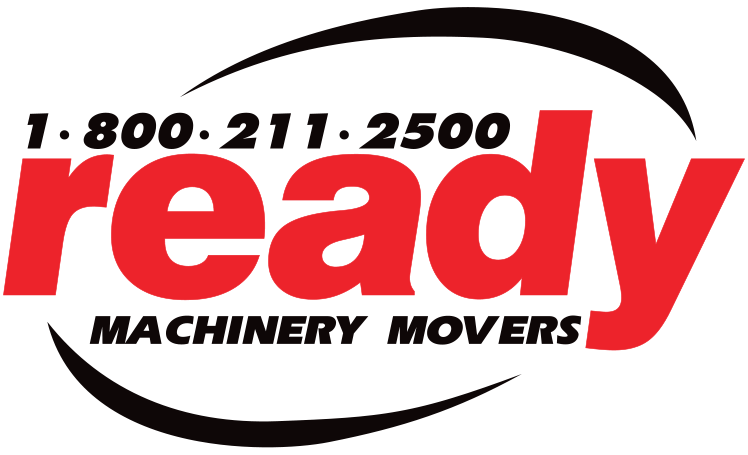Every warehouse follows several processes in handling and managing items. From the time a product reaches the warehouse until its shipment, you should keep an eye out on each process to ensure that the product arrives where it should be. To maximize efficiency throughout the product flow, individual moves within each process should be minimized. The same principle holds true in receiving and dispatching machinery.
Several factors can make or break efficiency in the warehouse. Each element can impact product flow in varying degrees, depending on the warehouse. The following are the common factors that can impede your progress:
- Processes – Are you implementing manual procedures that take too much time? It may be time to assess if there are outdated processes that may be redundant, or if unnecessary steps have been added to the process.
- Technology – With the help of modern technology, stock placement systems and warehouse management software are now available to ramp up your progress. The cost of these advanced systems may be high; however, you’ll experience returns in increased productivity and profit.

- Quality control – Efficiency isn’t just defined by the fast movement of products, but also by the quality of the work that’s being delivered. Quality checks are essential. Factors like employee efficiency and overall warehouse efficiency should be taken into account.
- Scheduling – Predicting output and planning the warehouse’s labour needs can be a challenge in achieving high levels of efficiency. To navigate through this challenge, you need to maximize your labour force, making sure that the number of team members is appropriate for the work volume.
These areas of concerns can be corrected by a thorough assessment of your warehouse processes. Once you’ve identified the points that need to be rectified or eliminated, you can then implement these changes to all your operations.
Here are the conventional warehouse processes and some ways to improve efficiency in every touch point.

Receiving
Effective receiving operations is a vital component in ensuring the integrity of your inventory systems and tracking the availability of your products. When this aspect is overlooked, chances are the products escape counting and inspection. A comprehensive reception management system must be in place to cut off inefficiencies that may arise in this operation.
As you explore effective systems that can promote higher efficiency in your receiving operations, refer to these metrics:
- Dock to stock time – The required amount of time to move materials from the system to usability.
- Error reporting – There should be a system that allows you to double check label scans that immediately detect errors during the warehousing process.
- Dock utilization – Tracking of the use of dock doors and space to allow for maximum efficiency.
- Supplier shipping problems – Design a system that can quickly detect errors (e.g. wrong item, incorrect qualities, paperwork mistakes) from the end of the shipper so that shippers can be informed of these problems.
Setting up simple systems like dock scheduling, wherein shippers are advised to notify the receiving department 24 hours ahead of the delivery schedule, can give operation managers enough lead time to prepare all the systems needed in receiving the incoming equipment, especially when receiving heavy machinery. This method can also aid in providing accurate inspections, counting, and labelling once the products arrive. Warehouses can also implement cross-docking, a system that sends products to another dock for another route of shipment when the items are not needed for a set period.

You can also implement some changes in these processes involved in the receiving stage:
- Process – To enforce accountability, workers should record every action done during the receiving operations. This reduces the likelihood of miscounts and makes sure that issues like incomplete deliveries and defective shipments are not overlooked even in a particularly hectic shipping.
- Inspection – Sufficient workforce and time must be scheduled at this point to better detect problems with shippers, handlers, packaging, and to directly address the causes for delays in shipment.
- Labelling – To enhance the accuracy of labelling, you can explore bar-coding, radio frequency identification (RFID) scanners, and automated pallet storage and management. These computerized systems will require personnel training to make sure they are equipped in executing the necessary procedures.
 Storage
Storage
The thrust of improving efficiency in terms of storage comes in two objectives: Reduction of operation costs needed to store a specific volume of product, and expediting the process without compromising accuracy. The picking and storage methods you follow largely contribute to how you can achieve these objectives.
Here are some storage options you can consider for greater warehouse efficiency:
- Store by type – Try to put like equipment together, like designating a bulk section intended for large equipment and another section for smaller items.
- Store by velocity – Another method is to sort items based on how fast it takes to move through the different sections in the warehouse. Heavy equipment should be stored in highly accessible locations that are near the docks, while lighter material can be placed further back.
- Random locations – Many warehouses arrange their items in random places, which gives put-away workers the liberty to drop items wherever there’s space. In a way, this can cut the time needed to put inventory away. Conversely, this approach may slow down the pickers since there is no strategic method in storing items.

Depending on the need, you may combine all these methods to figure out which works best in your warehouse setup.
Picking techniques
Implementing methods of picking is of equal importance to having a strategy for storage. You may choose one method, or combine these three as needed:
- Zone picking – This reduces the steps the pickers need to take and free up other areas in the warehouse. Try assigning pickers to a particular aisle or zone. This way, they are only moving in one area.
- Single item picking – Choose this method if you’re storing in-demand items.
- Batch picking – Picking various equipment in one go can speed up the process, reducing the number of trips to go from pickup to drop off zones.
Boosting efficiency in the warehouse means combining effective practices in storage schemes and employee routing.

Staging
This process mainly involves the assembly of large or heavy machinery or equipment before relocating or shipping it to its final destination. There are several reasons why a company needs to stage a product before transportation. If you are storing sophisticated equipment in your main warehouse, it’s also a good option to have it staged in a larger, offsite storage facility in Ontario. By keeping fewer items in your warehouse, this method of diverting large items to another warehouse can help you free up more space for storing more items.
Staging can also lead to greater efficiency. With fewer items in the warehouse, your pickers will exert less effort to carry equipment to different locations to pull it out when needed. This reduces travel and touch points. Staging is also a recommended practice if you have heavy equipment, but your warehouse is located several kilometres away from shipping outlets. Staging equipment in an area closer to a shipping outlet means faster shipping, saving you time and money.
By changing any or all of these warehouse processes, you can improve efficiency and deliver your products to your customers in the fastest possible time. The higher the productivity, the more satisfied your customers become.
If you are looking for a storage facility in southwest Toronto, Ready Machinery & Equipment (Canada) Inc has a large warehouse spread out over four acres that is ideal for equipment receiving, storage, and staging. We offer reasonable rates for indoor and outdoor machinery storage.
Call us at 1-800-211-2500 to get a quote. We also offer export packaging and overseas shipping services.
